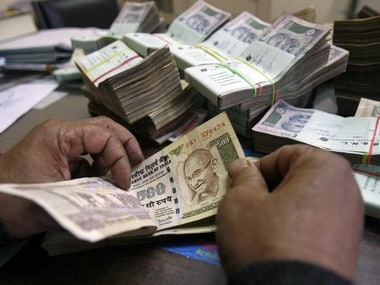A couple of things stand out in the economic growth numbers released on Monday, once one gets past the mandatory cheering about India being the fastest growing economy, even at a lowered growth estimate. For one, the projected 7.6 percent in the current fiscal (against 7.2 percent in 2014-15) doesn’t stand on very firm ground. This growth is not being powered by investment. Secondly, the fiscal deficit target is almost certain to be breached unless there is a massive cutback in spending or huge surge in revenues. There is little point in raising the usual questions about the robustness of the numbers thrown up by the new methodology. The new GDP series is work in progress and, as this article points out , it will take time for the glitches to be ironed out. Until then, these are the numbers one will have to go by, no matter how unbelievable they are. [caption id=“attachment_2522936” align=“alignleft” width=“380”]  Reuters[/caption] Now, getting back to the two flags. Gross fixed capital formation (GFCF) – the measure of investment - is likely to see some growth (5.3 percent in 2015-16, up from 4.9 percent in 2014-15 and 3.4 percent in 2013-14), but the GFCF-GDP ratio is set to decline further to 29.4 per cent. This will make it the fifth straight year of decline. Even looking at it in quarter-over-quarter terms, the investment rate is falling. After a steady decline to 29.9 per cent in the third quarter (Q3) of 2014-15, it had shown a very small improvement to 30.9 percent in Q1 of 2015-16. But then it started falling again and, as of Q3 of the current fiscal, stands at 27.8 per cent. If the investment rate has to touch the full-year figure of 29.4 percent, it will have to grow almost 4 percent in the current quarter. That seems a tall order; the Reserve Bank of India’s quarterly OBICUS (order books, inventories, and capacity utilisation survey), shows capacity utilisation down to 70.6 per cent in the July-September quarter. The Nikkei India Manufacturing Purchasing Managers’ Index moved back into the positive zone in January, but the improvement was moderate; it does not hold out hope for a dramatic investment revival. After all, corporate balance sheets as well as that of banks continue to be stressed. So, as D. K. Joshi, chief economist of Crisil says, it will be a challenge to make investment the engine of growth. Can private consumption be that engine this year? The private final consumer expenditure (PFCE) to GDP ratio also provides a mixed picture. While it has improved over the years (from 57 percent in 2012-13, it is set to touch 59.8 percent in 2015-16), it has been fluctuating since the first quarter of 2014-15 and in Q3 of this fiscal stood at 59.3 percent; it was 60.1 percent in Q1. Remember Q3 (October-December) was the festival season, so this drop is puzzling and worrying. If the economy is to grow at 7.6 percent this year, private consumption will have to grow 11.6 percent in January-March and that, says Devendra Pant chief economist of India Ratings, looks very difficult. Now, on to the fiscal challenge. The fiscal deficit target of 3.9 percent for 2015-16 was based on the assumption of GDP being Rs 141 lakh crore; it is now projected at Rs 135 lakh crore. So even if the government sticks to the budget estimate of a fiscal deficit of Rs 5.55 lakh crore, the ratio to GDP will rise to 4 percent, which will create its own set of challenges for the target for 2016-17. But if the government plans to stick to the 3.9 percent target with the lower GDP, then it will have to contain the fiscal deficit at Rs 5.29 lakh crore. The government has only two options – either raise revenues or cut spending by nearly Rs 26,000 crore. As of December, total receipts were 67 percent of budgeted estimates. Pushing this up significantly is not going to be easy. Cutting back on expenditure at a time when public spending is needed to pump prime investment is also fraught with risks. Given the inflexibility of revenue expenditure (salaries, interest payments, pensions account for the bulk of it), the axe may fall on capital expenditure. Now, the quality of expenditure has certainly improved under this government – growth in capital expenditure has been higher than in revenue expenditure and the share of the former is also higher (14 percent) than earlier (when it was around 10-12 percent). But Abheek Barua, chief economist of HDFC Bank, points to a worrying phenomenon. Since January, there has been a major liquidity shortage in the market, with the government keeping very large cash balances with the Reserve Bank. The cash balances, he says, are twice the size of what they were in the last few years and this is an indication that the government has completely clamped down on expenditure. This may help the government show better fiscal deficit numbers, but the effect on the economy will be very worrying. And if it is capital spending that is being scythed, then one can kiss any investment revival goodbye. Clearly, the government’s economic management skills are going to be put to severe test.
The government has only two options – either raise revenues or cut spending by nearly Rs 26,000 crore
Advertisement
End of Article


)

)
)
)
)
)
)
)
)



